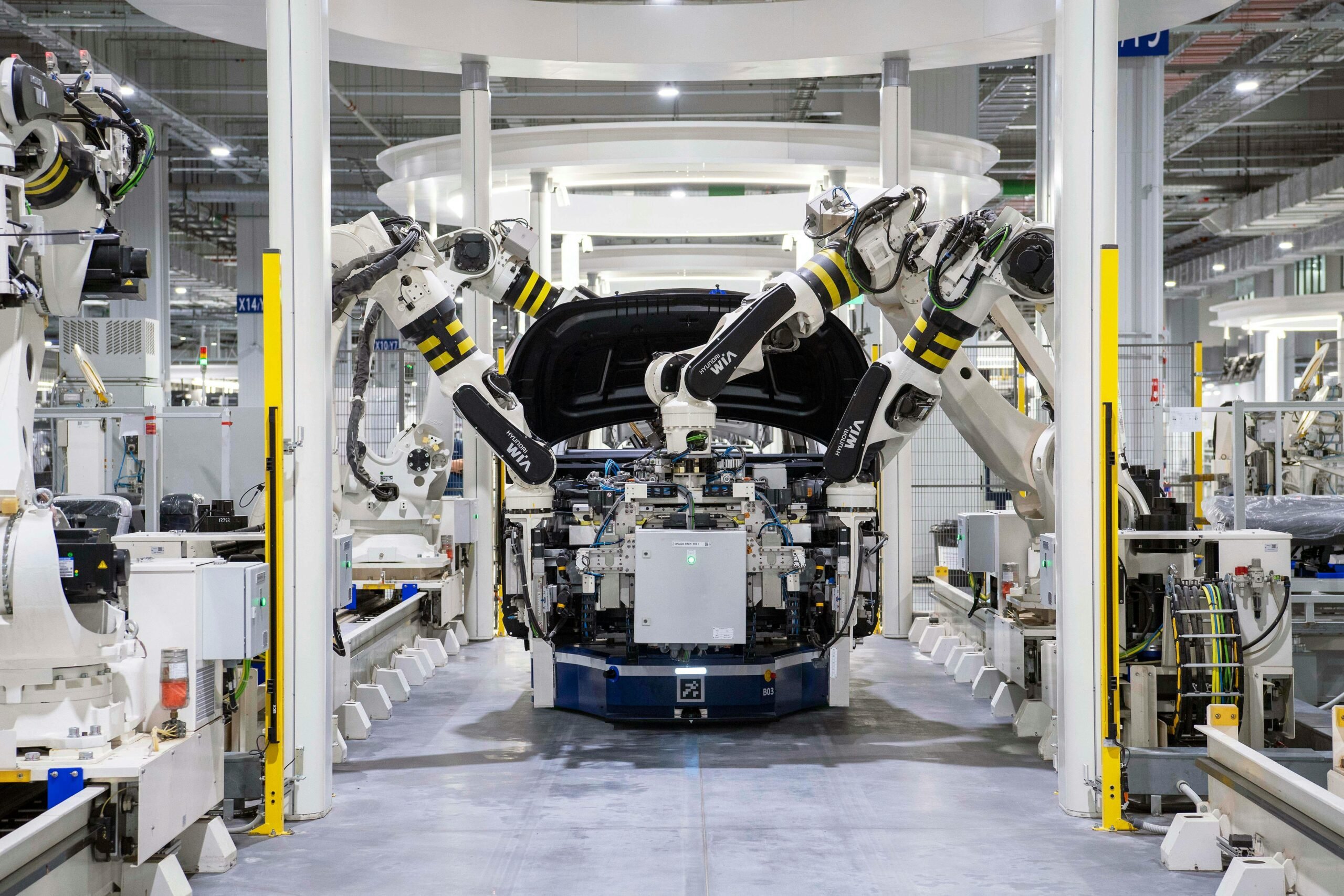When Netflix introduced its DVD service Qwikster, executives said the data pointed to high demand for the program. But the forecasting model had been developed using customer information from their successful streaming service, leading to a deeply flawed market forecast for the new service.
IBM Watson faced significant data quality issues while building AI applications for healthcare because the source data from various healthcare providers was incomplete or inconsistent.
These and countless similar examples of poor or incorrectly used data demonstrate the importance of ensuring that business decisions are based only on well-vetted, high-quality data.
The opportunity is immense. So is the quantity of data.
As 2025 unfolds, several trends are converging to reshape how manufacturers use artificial intelligence to harness the value of their operational data. Examples of these efforts abound, including Tesla mining performance data from the cars it sells and Amazon obtaining product data from buyers (including second-by-second mouse movements).
The sheer volume of data produced by industrial assets can be mined, analyzed and used to create high quality, more reliable products. With all these assets generating information, it’s easy to become overwhelmed. So many users simply cherry pick the information they think they need – or they don’t listen at all.
Joe McKendrick noted in Forbes that “AI needs data more than data needs AI. In truth, what drives AI performance is a strong foundation of data quality management.”
The foundational tenet of every AI application? Quality and quantity of data are paramount to its effectiveness. Data is the lifeblood that fuels AI performance, allowing models to learn, adapt and provide accurate recommendations. Put simply, the more diverse and comprehensive the data, the better AI applications perform.
Several attributes combine to ensure that data used by AI algorithms is of the highest possible quality.
Data quality and governance
Objective assessment of data availability is a critical first step. Companies must ensure they have good, clean data that can be funneled from disparate systems to a single cohesive AI solution. That’s a heavy-lift IT project, and it requires that companies have a well-thought-out process for achieving it.
Data powers visibility and companies need visibility into their entire value chain to manage day-to-day operations, identify and avert risk, and make the best decisions for future growth. AI can serve as a fail safe, preventing operators from taking actions without considering all the end-to-end value-chain implications, enabling them to obtain valuable insights and make correct decisions.
Representativeness and the elimination of bias
It’s critical that data being used in AI algorithms mirrors real world scenarios and conditions. Care should be taken to ensure there is no biased labeling, inclusion of under-represented groups, etc.
Timeliness
Timeliness of performance data is key. Only fresh data can produce relevant, actionable conclusions.
Accessibility
Data should be made generally available for many users. But it’s also important to maintain data privacy and security when required for sensitive information.
Completeness
Data must be as complete as practically possible. Companies frequently achieve this by filling in absent data instances with best guesses, extrapolations, etc.
Follow the data; learn from the data
One Avathon product manager explained the manufacturing data challenge this way:
“The AI layer is what unifies the various operational data silos and provides an interconnected approach to manufacturing. With advancements in AI, manufacturers now have the ability to tease out efficiency gains, reduce costs, increase throughput, and improve not just the quality of end products, but also the quality of the human experience on the factory floor.”
The market for AI in manufacturing is projected to see the largest growth year over year of any market in the coming few years, rising at a compound annual growth rate of around 33%. Manufacturers who understand the value AI can provide will be trialing and onboarding platforms and systems into their daily workloads to improve things like efficiency, reduction of waste and improving workplace safety. According to a recent Deloitte survey, “83% of companies think AI has made or will make a practical and visible impact. Among these, 27% believe AI projects have already brought value to their companies, and 56% think these projects will bring value in 2-5 years.”
With inconsistent data formats and standards across different systems and departments, it can be difficult to aggregate, analyze and derive meaningful insights from the data. Trying to integrate data from disparate sources can be very complex and time-consuming, slowing down efforts to leverage data for decision-making and optimization.
Uncovering insights from unstructured data
One of the key areas where AI is making a profound impact is in mining unstructured data. According to Gartner, a staggering 80-90% of enterprise data is unstructured, comprising documents, images and even handwritten records. Previously inaccessible insights buried in these data sources are now being unlocked, allowing for more comprehensive analysis and decision-making. Advances in NLP technology enable the translation, synthesis and citation of text embedded within scanned documents and images, revolutionizing the way businesses extract value from their data.
The key is data that’s accurate and actionable
Ultimately, the challenge of data is to make sure it’s actionable. Companies need to integrate data from all their available sources and apply core AI models to create value-adding outcomes. With the right industrial AI provider, users can scale their performance management activities across a large, diverse group of assets, giving managers the information they need to make timely accurate decisions.
The relationship between AI and operational performance data is undeniable. While AI requires data to perform tasks, learn, and evolve, data remains valuable even in the absence of AI. It’s not a matter of one being more essential than the other; rather, it’s about recognizing the symbiotic relationship that empowers both to reach their full potential. As we continue to advance in the era of AI, understanding this dynamic will be key to harnessing the true transformative power of artificial intelligence.
Learn more about how data quality, timeliness, and accessibility impact your company’s AI performance.




